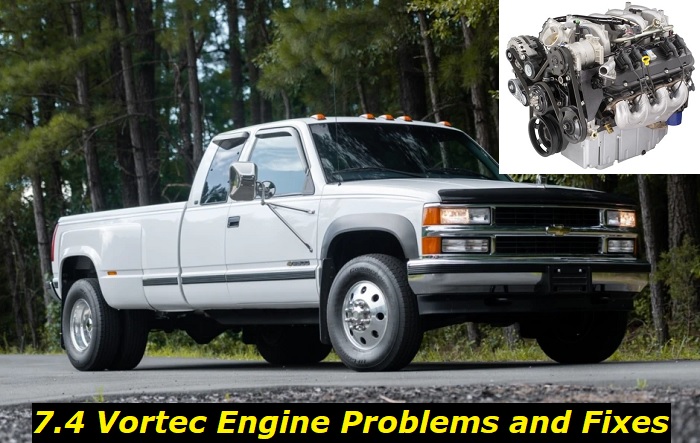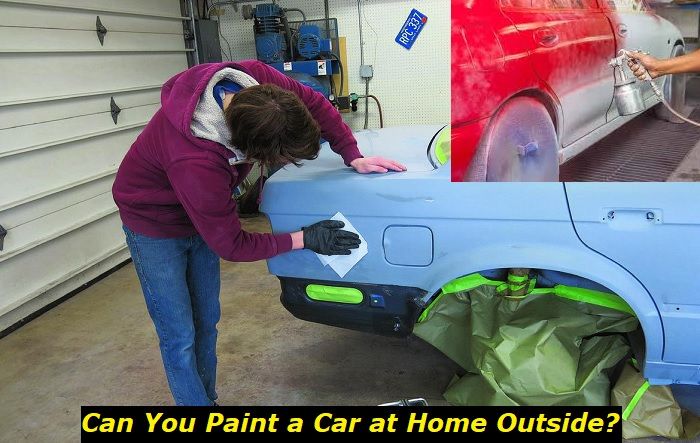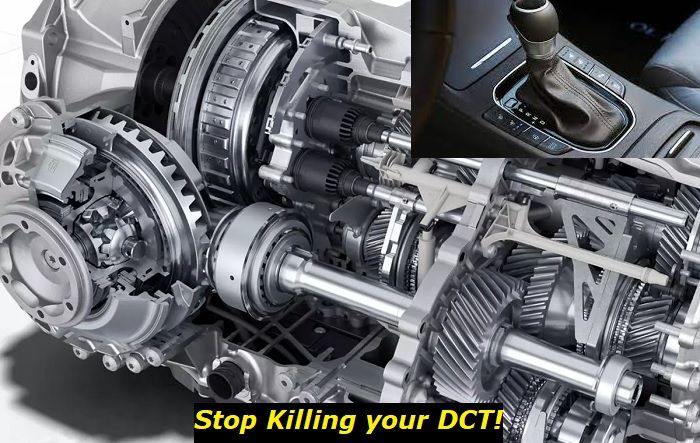The 7.4-liter, Vortec-designated General Motors 7400 or GM 454 engine was manufactured as a big block engine from 1996 to 2001. The American automaker touted it as a fuel-efficient unit with an ideal air-to-fuel combustion mechanism designed to ultimately produce more horsepower than its predecessor. Overall, the manufacturer achieved just that by giving the power unit a total of 290 hp and 410 lb-ft of torque. However, all of that didn't come without hiccups.
Over the years, there have also been problems linked with the 7.4 Vortec, and that's what we are going to reveal to you in this article.

Key features and my opinion about the engine
- Production years:1996-2000
- Average lifespan of 7.4L Vortec:300,000-350,000 miles
- Fuel supply type:port injection
- Power range:290 hp
- Fuel efficiency:awful
- Engine block material:cast-iron
- Engine reliability score:high
- The most common problems:unreliable fuel injection system, timing system issues, problems with wiring and sensors.
Common Problems Found in the 7.4 Vortec
The 7.4 Vortec is an amazing engine but that does not mean that it is entirely trouble-free. There have been problems associated with it during its production run, which include the following:
1. Valve Ignition Timing Problem
The function of valve ignition timing is to ensure that the valves open and close at the correct times. If the timing is off, the engine will run less efficiently and may even overheat.
Some of the symptoms of valve ignition timing problems in the 7.4 Vortec engine include poor engine performance, overheating, and strange noises coming from the engine. If these are not addressed immediately, they can lead to further damage to the engine.
Among the possible causes of valve ignition timing problems include a faulty timing belt, incorrect timing belt tension, or a problem with the camshaft. If the work only involves ignition timing adjustment, it may only cost you around $53 to $67.
The other solutions for these problems include replacing the timing belt for around $367 to $585, adjusting the tension on the timing belt for around$270 to $341, replacement of the timing belt tensioner for around $360 to $454, or replacing the camshaft starting at $700. In some cases, more parts of the engine that have been affected by the issue may need to be replaced if they have been damaged beyond repair.
2. Fuel Intake Calibration Issues
The fuel intake of the 7.4 Vortec engine must be calibrated according to its manufacturer's specifications at all times for it to maintain its correct air-to-fuel mixture. The calibration of the system also influences the regulation of the amount of fuel that is injected into the engine. If there is an issue with the calibration, it can trigger a number of problems.
One of the most common symptoms of a problem with the fuel intake calibration is a decrease in engine power. This can be noticed when accelerating or when trying to maintain a higher speed. The engine may also run rough and hesitate when under load. These problems can lead to decreased fuel economy and may cause the engine to stall.
If the problem is not addressed, it can eventually lead to engine damage. The valves and pistons can become damaged from the incorrect fuel mixture, and the engine may eventually seize up.
There are things that can cause the fuel intake calibration to become off. A common cause is a build-up of carbon deposits on the injectors. This can be due to the use of low-quality fuel or not changing the fuel filter regularly. Another culprit is a problem with the ECU, which can be caused by a software update or a hardware issue.
If you notice any of these symptoms, it's important to have the problem diagnosed and repaired as soon as possible. Depending on the cause of the problem, the fix may only require ECU recalibration for around $300, cleaning for around $50 to $80, or it may be necessary to replace some of the components in the fuel system or the entire ECU for an additional cost.
3. Clogged Fuel Injectors
The fuel injector regulates the amount of fuel that goes into the engine and controls the timing of the fuel injections. A clogged fuel injector can definitely cause a lot of problems along the way.
The most common symptoms of a clogged fuel injector are engine misfires, reduced fuel economy, rough idle, hesitation during acceleration, and the check engine light turning on. Meanwhile, the possible causes of a clogged fuel injector are dirty fuel, carbon deposits, rust, and foreign objects.
If a mechanic suspects that a fuel injector is clogged, the first step is to clean it, which may only cost you around $50 to $80. This can be done with a special tool called a "jet cleaner." The jet cleaner is inserted into the fuel injector and then pressurized with air. This cleans the inside of the injector and clears any blockages.
If the fuel injector is severely clogged or beyond repair, it may need to be replaced. Replacement parts can be expensive as the fuel injectors alone can drive you back around $600 to $754, so it's important to address the problem as soon as possible if you notice any of the symptoms listed above.
4. Blocked Fuel Filters
The fuel filter helps remove impurities from the fuel before it enters the engine. This ensures that the engine runs smoothly and efficiently.
The signs of a blocked fuel filter can be in the form of reduced engine power, poor acceleration, and stalling. The likely causes of a blocked fuel filter include a dirty fuel tank, contamination in the fuel system, or a faulty fuel pump.
The ways to go around this problem include replacing the fuel filter for around $50 to $175, cleaning the fuel tank for $20 to $1,000 depending on the material to be used to clear the contamination, and repairing the fuel pump for $220 to $1,000. Fortunately, replacing the fuel filter is the most common solution to this and is relatively inexpensive compared to other alternatives.
5. Broken Timing Belt
A timing belt is responsible for synchronizing the crankshaft and camshaft so that they can rotate at the correct intervals. Without a properly functioning timing belt, an engine will not be able to run.
You may have a broken timing belt in your 7.4 Vortec engine if you hear a loud noise coming from the engine, notice smoke coming from the engine, and the engine is not starting. If the problem is not addressed immediately, it can result in extensive damage to the engine.
The possible causes of a broken timing belt include wear and tear, a manufacturing defect, or an issue with the installation of the belt. The solutions to the problem can include replacing the timing belt, repairing the damaged engine parts for extra cost, or replacing the entire engine.
The costs of these solutions will vary depending on the extent of the damage and the particular solution that is chosen. Replacing the timing belt is typically the most cost-effective option for around $300 to $500, but if the damage is severe, it may be necessary to rebuild or replace the entire engine.
6. Worn Spark Plugs
The spark plug produces a spark that ignites the fuel in the engine, and this is what allows the engine to run. Worn spark plugs can cause loss of power, decreased fuel economy, and increased emissions. If the problem is not addressed immediately, it can culminate in total engine failure.
There are a number of possible causes of worn spark plugs, and these can include faulty spark plugs, dirty spark plugs, or incorrect gap settings. The best way to solve the problem is to replace the spark plugs with new ones. However, if the problem is caused by dirty spark plugs, then it may be possible to clean them and reuse them.
In some cases, worn spark plugs can also be caused by other problems, such as a misfire. If this is the case, then it is important to diagnose the problem and fix it before replacing the spark plugs. Otherwise, you may end up replacing the wrong parts and causing more damage to the engine.
If you suspect that your spark plugs are worn, it is important to take the car to a mechanic and have them check the problem. They will be able to tell you whether or not the plugs need to be replaced, and they can also give you advice on how to solve the problem. In some cases, they may even recommend that you replace the entire ignition system.
If you have worn spark plugs, it is important to address the problem as soon as possible. Replacing them with new ones is the best way to solve the problem, which will only cost you around $16 to $100 a set depending on the type you have chosen.
Durability
The latter version of the Vortec 7400 produced from 1996 to 2001 was designed to be a workhorse. It was engineered to be used for SUVs, pickup trucks, vans, and even haulers. As such, it didn't disappoint owners as it was said to deliver over 250,000 mileage when properly maintained and the underlying problems discussed here are fixed at their onset.
Conclusion
The problems shown here do not necessarily apply to every 7.4 Vortec engine out there. Based on general complaints raised by a significant number of owners and reports from various automotive sources though, its stock version has a high risk of encountering these.
It should also be reminded that most versions of the engine being utilized now have undergone rebuilding, thus, some of the issues here may have either been mooted or made worse in its reworked variants. Notwithstanding the problems it underwent over the years, the 7.4 Vortec is still generally praised for its performance, fuel economy, and reliability as a truck engine.
About the authors
The CarAraC research team is composed of seasoned auto mechanics and automotive industry professionals, including individuals with advanced degrees and certifications in their field. Our team members boast prestigious credentials, reflecting their extensive knowledge and skills. These qualifications include: IMI: Institute of the Motor Industry, ASE-Certified Master Automobile Technicians; Coventry University, Graduate of MA in Automotive Journalism; Politecnico di Torino, Italy, MS Automotive Engineering; Ss. Cyril and Methodius University in Skopje, Mechanical University in Skopje; TOC Automotive College; DHA Suffa University, Department of Mechanical Engineering






Add comment